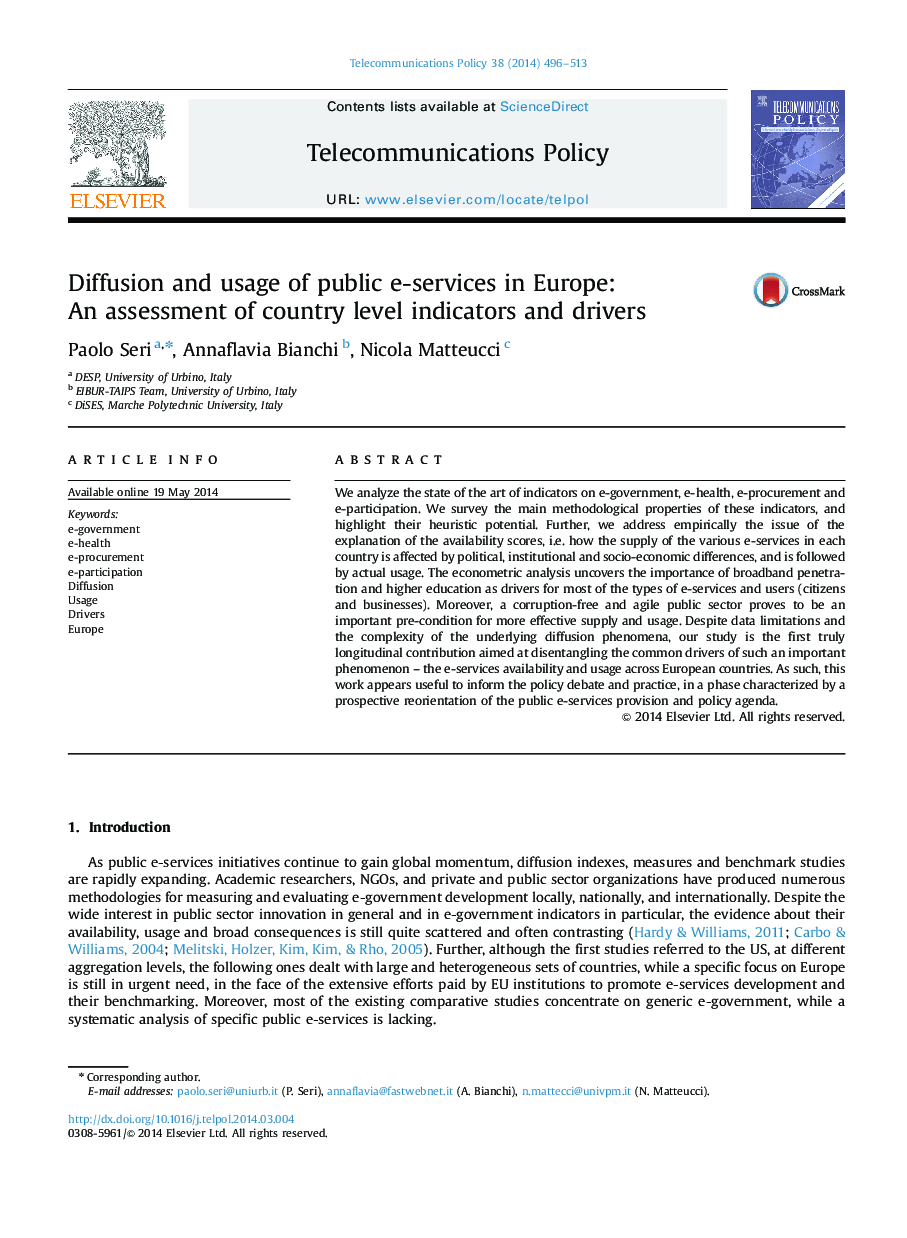| Article ID | Journal | Published Year | Pages | File Type |
|---|---|---|---|---|
| 557300 | Telecommunications Policy | 2014 | 18 Pages |
•State of the art of the indicators on e-government, e-health, e-procurement and e-participation.•Analyses of the properties, stylized facts and trends, limits and inconsistencies of these indicators.•We address empirically the issue of the explanation of the indexes scores.•We explain how political, institutional and socio-economic differences affect supply and usage of e-Services.
We analyze the state of the art of indicators on e-government, e-health, e-procurement and e-participation. We survey the main methodological properties of these indicators, and highlight their heuristic potential. Further, we address empirically the issue of the explanation of the availability scores, i.e. how the supply of the various e-services in each country is affected by political, institutional and socio-economic differences, and is followed by actual usage. The econometric analysis uncovers the importance of broadband penetration and higher education as drivers for most of the types of e-services and users (citizens and businesses). Moreover, a corruption-free and agile public sector proves to be an important pre-condition for more effective supply and usage. Despite data limitations and the complexity of the underlying diffusion phenomena, our study is the first truly longitudinal contribution aimed at disentangling the common drivers of such an important phenomenon – the e-services availability and usage across European countries. As such, this work appears useful to inform the policy debate and practice, in a phase characterized by a prospective reorientation of the public e-services provision and policy agenda.
